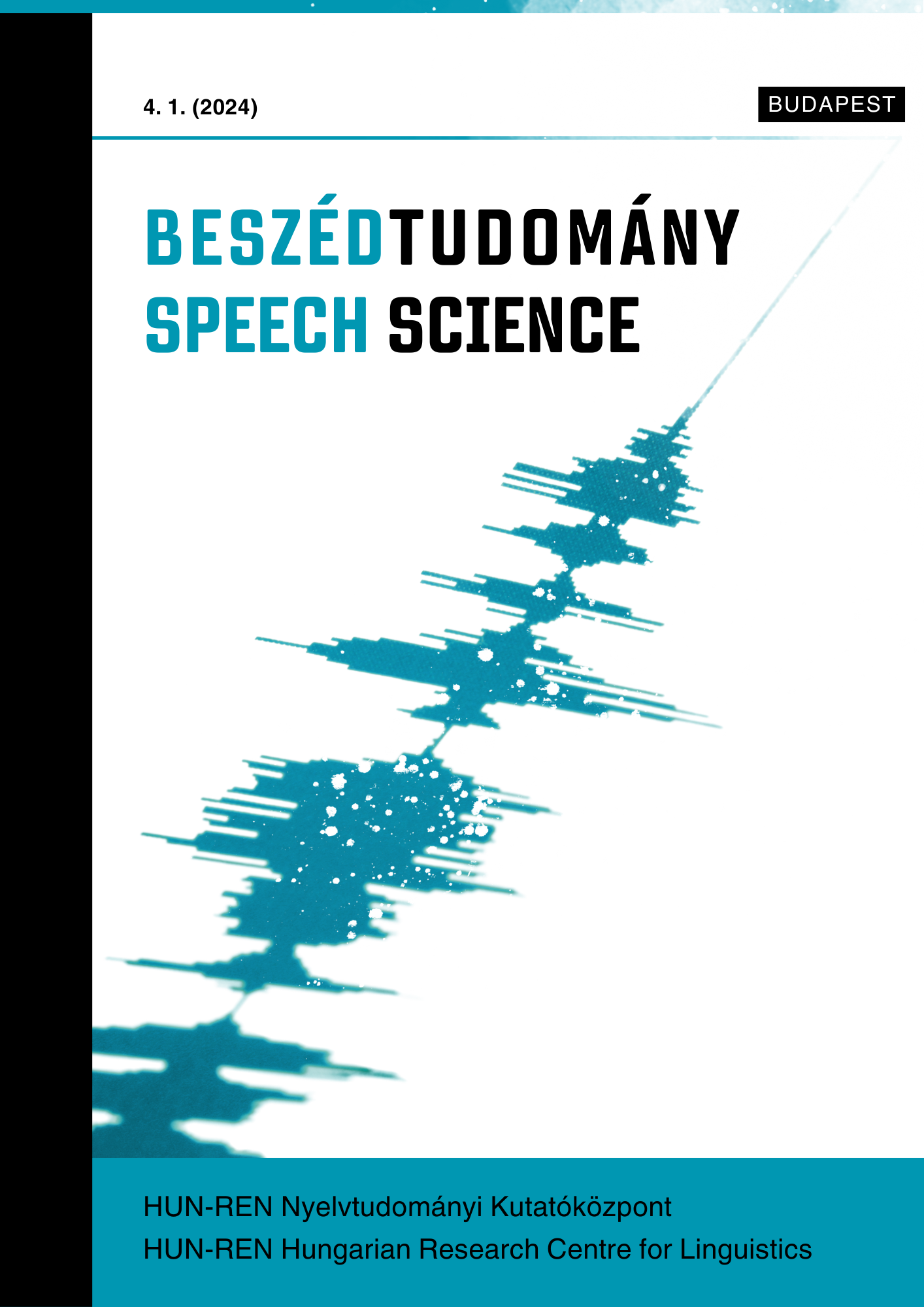An experiment to reveal the types of Hungarian discourse marker 'hát'
Abstract
Although many believe that the frequently occurring Hungarian discourse marker hát (‘well/so’) is a superfluous filler, previous research has pointed out its multifunctional nature. It harmonizes the communicating minds, preparing the listener for receiving new information. Hát therefore works like a semaphore and has a crucial role in human communication. This paper examines whether there are differences in duration parameters between háts expressing different meanings. In this study, 53 speakers (28 females, 25 males, all university students, speakers of standard Hungarian) read a text, imitating spontaneous speech. In the utterances, hát appeared in ten different functions (h1 straightforward, h2 uncertain, h3 uneasy, h4 teasing, h5 resigning, h6 introductory, h7 summative, h8 evaluative, h9 sentence-final inferring, hf sentence-final confirming). The duration of háts and of the following pauses, where hát was not in a final position, were measured. The duration of háts with summative, straightforward, introductory, or evaluative functions was shorter, while those expressing negative attitudes or uncertainty were longer. Teasing represented a separate category, as well as the two sentence-final types. Differences in the duration of the pauses following the háts were also found. Pauses following the uneasy háts were significantly longer than those following the straightforward and summative ones. The results confirm the significance of prosody in different uses of hát. Possible uses of the results in speech technology and language teaching are raised, and it is also highlighted that hát is a natural element of the Hungarian language.




